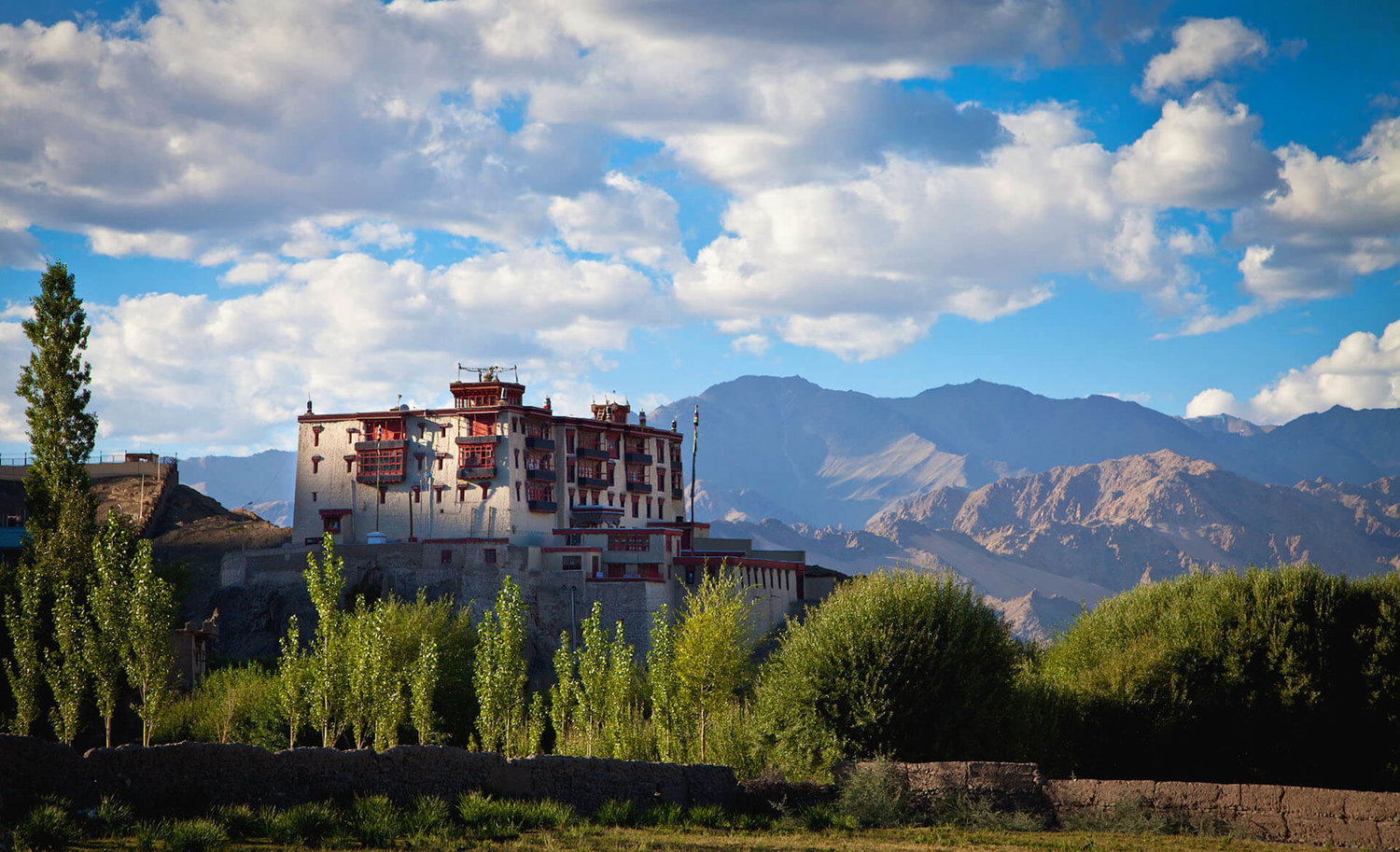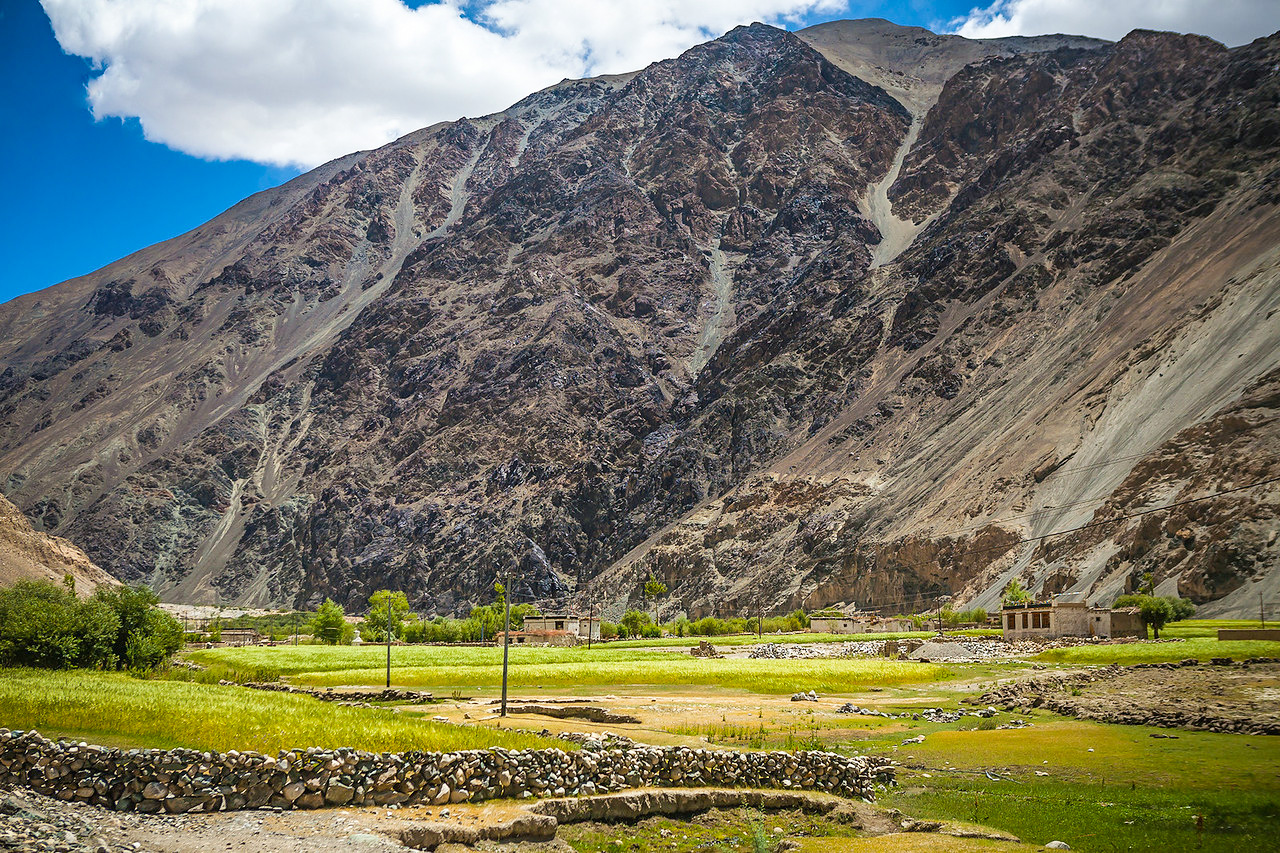It was mid-afternoon when we arrived in Leh. The temperatures soared to 30 degrees, a very unlikely for Ladakh. But the temperature was hardly a factor to deter tourists from visiting the quaint little museum of the Ladakhi royal family in the Stok Palace. As we checked in, taking an eyeful of the exquisite century-old building holding many tales and anecdotes of Ladakhi history and culture, a family passed by. I heard a woman say “I wish I could hold time and be here”. I could relate to her. The Palace sits on the top of a hillock overlooking the Stok village, with the Khardungla pass and Stok peak on either side overlooking it as royal guardians.


The Stok Palace was built in 1822, as a smaller retreat. The main palace of the Namgyal dynasty, the Leh Palace, was some 15km away across the Indus. After the Ladakh kingdom was annexed by the Dogra rulers of Kashmir, the Namgyals were made the jagirdars of Stok village, and the Stok palace became their main palace. It’s still a living palace with the king’s family residing in a part of the palace. Another part has been renovated and restored and turned into a heritage hotel. These days, it offers discerning visitors a selection of four suites, a royal suite, and the queen’s bedroom.
This magnificent palace is no mean retreat. Stok Palace is one of the most unique royal palace hotels in India and is essentially a distillation of a way of life. We were so eager to find out more in our two days of stay.


The first impression
The first look of the palace gives you the quintessential Ladakhi feel. The central courtyard overlooking the Indus valley is dominated by a huge front courtyard with a huge tarchen (flagpole) tied to a yak head and shaded balconies of the different rooms in the palace. A staircase brings us to a smaller inner courtyard with a smaller tarchen, rooms on different sides, and a smaller staircase leading off to the various wigs of the palace. The large tarchen in the outer courtyard, as we were told, signifies that the household contains all the main Mahayana sutras as well as the Prajnaparamita manuscript.
Our suite was a lavishly appointed room dominated by a huge double bed, a delightful mix of pastel shades, and traditional wood and mud-brick stylings on the wall. Colourful murals in the Tibetan style adorn the ceiling. The low-ceilinged rooms with antique furniture, and Ladakhi elements in their build and layout, embodied the Ladakhi vibe and heritage.
Soon after we were led to a lavishly decorated dining room overlaid with exquisite murals, gilded signs, and carvings, for our sumptuous lunch. And meals are where the Stok Palace recreates the local way of life. As we sat, the passion for the preservation of Ladakhi culture and history was quite evident. From the wooden threshold in the dining place, we could see the royal kitchen layered with rows of copper utensils in which delicious fare is cooked every day. The kitchen has a local touch, and most ingredients are either sourced locally or like jams and pickles manufactured in-house. Stok Palace highlights traditional, local ways of cooling and eating with locally grown grains, recipes, and even traditional utensils and methods of cooking.



Our rooms
We soon retired to our spacious suite, as the first day was to be spent on resting and acclimatizing ourselves to the changed atmospheric conditions of Ladakh, and beating the high altitude sickness. We woke up for the evening coffee in the ramparts of the palace.
We spent the evening enjoying the views from the palace ramparts and educating ourselves more about the palace with the co-owner and prince Stanzin Namgyal. And while Stanzin educated us on Ladakhi history from the Namgyal dynasty to the Dogra rulers, he diverged on more contemporary issues like the cross-border incursions and changing lifestyles in Ladakh with growth in tourism. Stanzin opened up to tell us about the adventurous routes in Ladakh and his views on making Ladakh tourism more rooted in local and designed sustainably. He deplored the mess Ladakh has become in recent times. “Now we have more tourists than the fragile environment of Ladakh can afford. The change is rampant and headed towards deleterious ends. When we started the hotel, we had an opinion to keep the place rooted in local culture, and not become a soulless hotel.”
Our stay was curated likewise, to absorb every element of local culture and design, and be educated about the history the place so dearly holds. The palace has its monastery, where prayers are held every morning and evening. The monastery, perched on the upper storey, is a large space dominated by a panel featuring large statues of the Buddha and Padmasambhava. There’s also a local monastery in the Stok village with an immense statue of the Buddha, at a leisurely 30 minutes walk from the palace.


The queen’s room is the most spectacular of all the suites in the palace. The room is adorned with splendid old frescoes and a majestic bed. The antique furniture, with old artifacts, and murals on the wall add to the charm of the room. The adjoining living area with enviable views of the Indus, adds to the room’s charm and grandeur.
The Chulli Bagh villas
At the night, our dinner was arranged in the Chulli Bagh villas, three family-sized villas on the palace grounds amidst the apple, apricot, and willow plantations. The villas adroitly mix traditional and contemporary designs, and are more expansive in space and comfort. The villas are equipped with a kitchenette for a longer stay for a family. We marveled at the use of sustainable design elements in the building of the villas to make them livable throughout the year.



The Stok Palace was our introduction to the history and heritage of Ladakh that stays in parts and pieces in random shades of Ladakhi life. However, the most enriching part was learning how the hotel imbibes the sustainable spirit and strives to bring the Ladakhi way of life to its guests.









